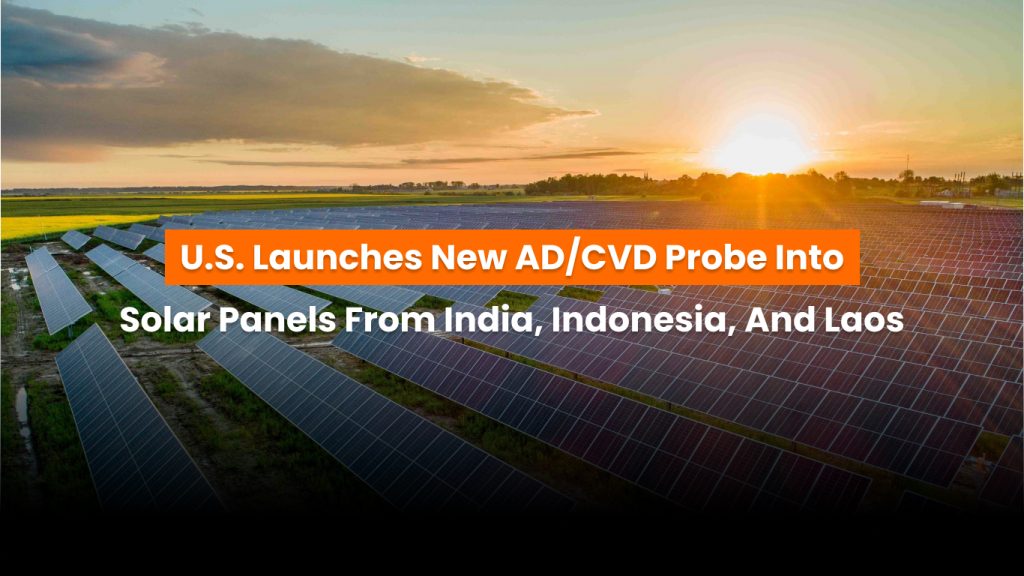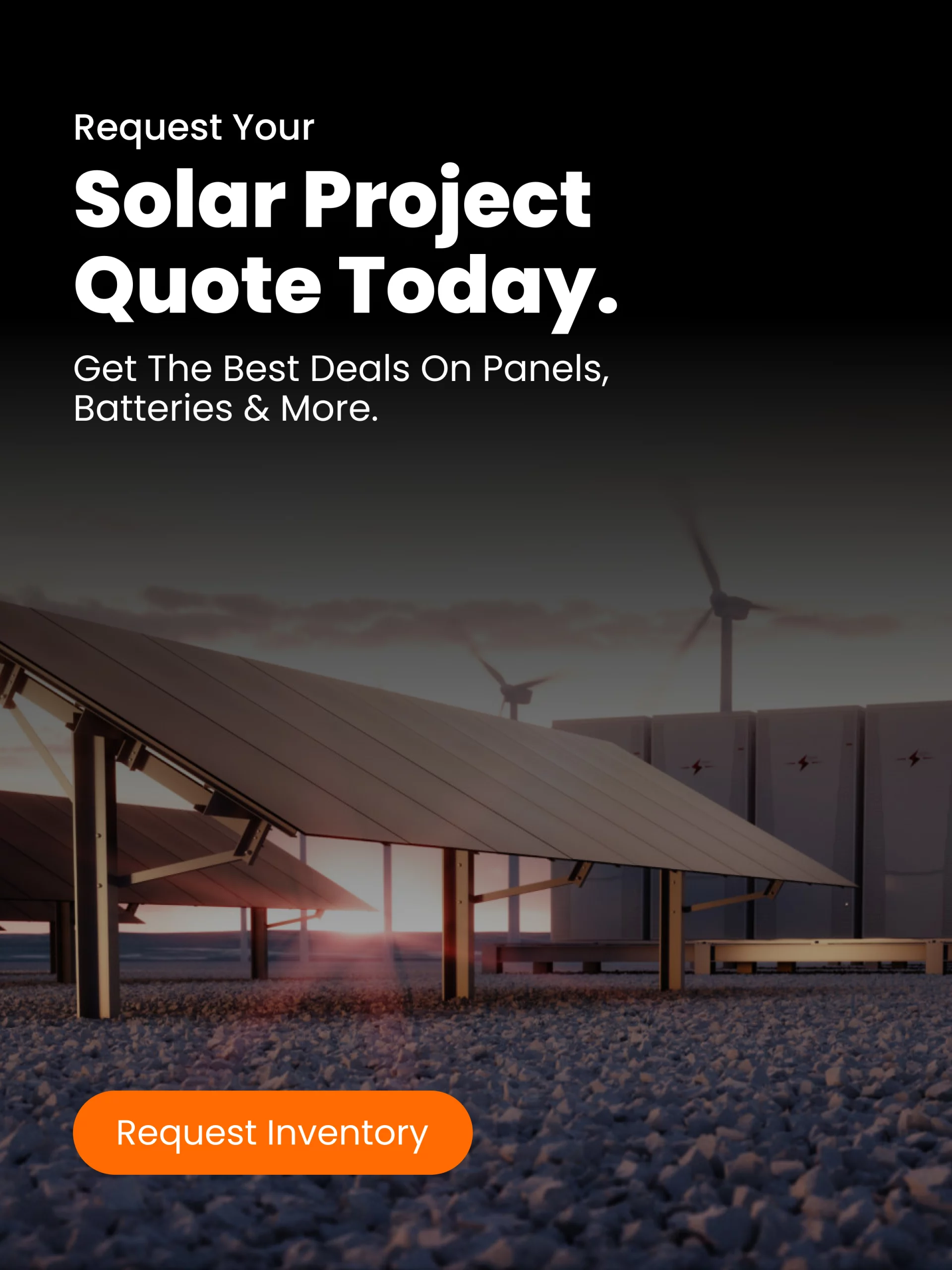The U.S. Department of Commerce has officially launched a new investigation into solar panel imports from India, Indonesia, and Laos. The inquiry centers around whether these products are being sold in the United States at unfairly low prices or are benefiting from government subsidies in their countries of origin. If these allegations are confirmed, the result could be additional tariffs imposed on these imports. The move adds another layer of tension to the already complex solar trade landscape. (Source: Project Finance Law)
Understanding AD/CVD and Its Significance
Antidumping (AD) and countervailing duty (CVD) investigations are designed to identify whether imported goods are being sold at prices below fair market value or are receiving unfair advantages through subsidies. When violations are found, the U.S. government can impose tariffs that significantly increase the cost of importing these goods. This process has already impacted solar panels from other Southeast Asian countries.
Earlier in 2025, panels from Vietnam, Malaysia, Thailand, and Cambodia were subject to tariffs of up to 46 percent. As a result, panel prices in the United States rose. According to data from pv magazine, the cost of TOPCon panels reached approximately $0.264 per watt, with Southeast Asian imports rising to $0.257 per watt. Panels from India, on the other hand, now average around $0.288 per watt. (Sources: Solar Power World, pv magazine India)
Why These Three Countries Are Under the Microscope
As tariffs made it more expensive to import from Southeast Asia, many buyers shifted their focus to alternative suppliers in India, Indonesia, and Laos. These regions offered competitive pricing and appeared to be unaffected by earlier trade actions. However, the increasing flow of goods from these countries has raised red flags among U.S. manufacturers and regulators.
According to pv magazine India, the price gap between imports from these countries and those from previously penalized nations has grown. This has led to concerns that India, Indonesia, and Laos may be helping manufacturers bypass existing tariffs by offering artificially low prices. One industry insider was quoted saying, “If you significantly choke off that [cell] supply, there’s not much else out there right now.” (Source: pv magazine India)
What This Means for the U.S. Solar Market
The implications of this investigation could be far-reaching. If the Commerce Department confirms that dumping or subsidization is occurring, tariffs could raise the cost of imported panels by 20 to 50 percent. Such an outcome would affect various stakeholders in the solar supply chain.
1. Higher costs for imported panels – New tariffs could make solar modules from India, Indonesia, and Laos more expensive, impacting project budgets.
2. Boost to U.S. manufacturing – Domestic manufacturers may benefit from reduced competition, making American-made panels more attractive.
3. Project delays – Developers depending on imports from these countries could face delays due to sourcing challenges and higher costs.
4. Market uncertainty – Ongoing policy changes may discourage new investments in large-scale solar and battery storage projects.
As noted by Solar Power World, the AD/CVD actions already taken against Southeast Asian countries have led to price hikes and complicated procurement strategies. Expanding these measures to more regions could intensify supply chain strain and disrupt project planning.
The Investigation Process
The Commerce Department will gather information from U.S. solar companies, importers, and manufacturers based in India, Indonesia, and Laos. Investigators will examine pricing practices, subsidy structures, production volumes, and the extent to which U.S. buyers rely on these imports.
After the Commerce Department completes its investigation, the U.S. International Trade Commission (ITC) must determine whether these imports have harmed domestic industry. If they reach an affirmative decision, tariffs could be finalized as early as 2026. Importantly, retroactive duties may be applied starting from the date the investigation began. (Source: Solar Power World)
Trade Policy and Market Volatility
This case fits into a broader trend of aggressive U.S. trade enforcement in the renewable energy sector. In April 2025, the Department of Commerce finalized steep tariffs on solar cells and modules from Southeast Asia. These tariffs ranged from 17 to 272 percent and were meant to address allegations of dumping and unfair subsidies. (Source: Project Finance Law)
While these moves aim to protect domestic industry, some experts warn that they could also disrupt supply chains and increase project costs. One developer interviewed by pv magazine expressed concern that additional AD/CVD measures may further restrict access to solar cells and create new bottlenecks in the clean energy transition.
What Solar Stakeholders Should Do
Solar businesses, developers, and regulators should prepare for potential changes in the market. Here are a few steps they can consider:
- Manufacturers and importers should begin compiling documentation about product origins, pricing, and subsidy involvement.
- Project developers might consider diversifying their supplier base and preparing for potential price hikes or availability issues.
- Policy officials should keep an eye on supply chain health to avoid unnecessary slowdowns in renewable energy deployment.
A Pivotal Moment for U.S. Solar
The Commerce Department’s latest investigation into India, Indonesia, and Laos highlights the delicate balance between enforcing fair trade laws and maintaining momentum in the solar industry. With domestic solar manufacturing still developing and demand for renewable energy increasing rapidly, the outcome of this probe could play a major role in shaping the next phase of U.S. solar growth.
As Solar Power World emphasizes, the challenge now is to support fair competition while ensuring affordable and reliable access to solar technology. Whether this investigation results in more stability or greater complexity for the solar market will depend on both regulatory decisions and how the industry adapts in the months ahead.




